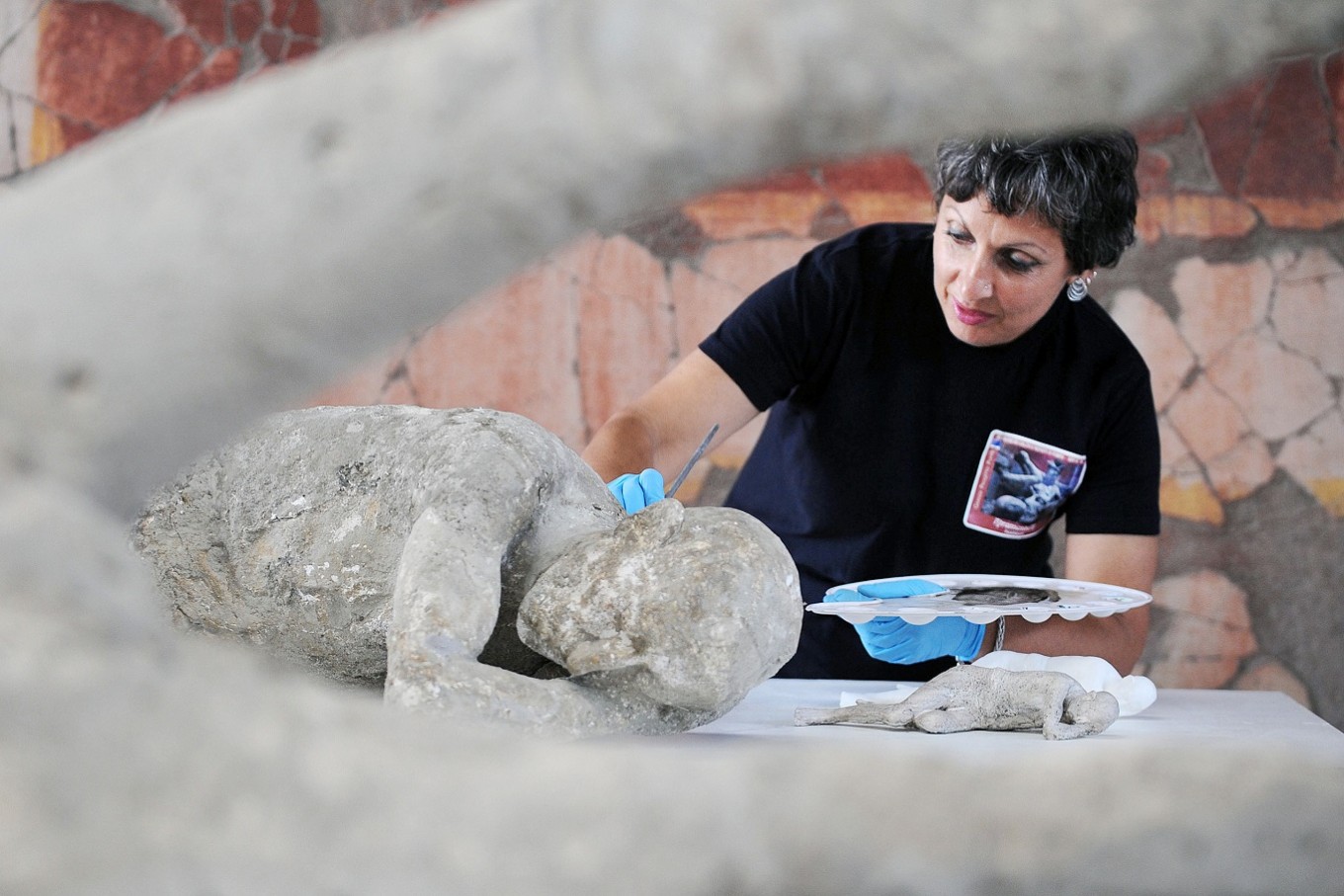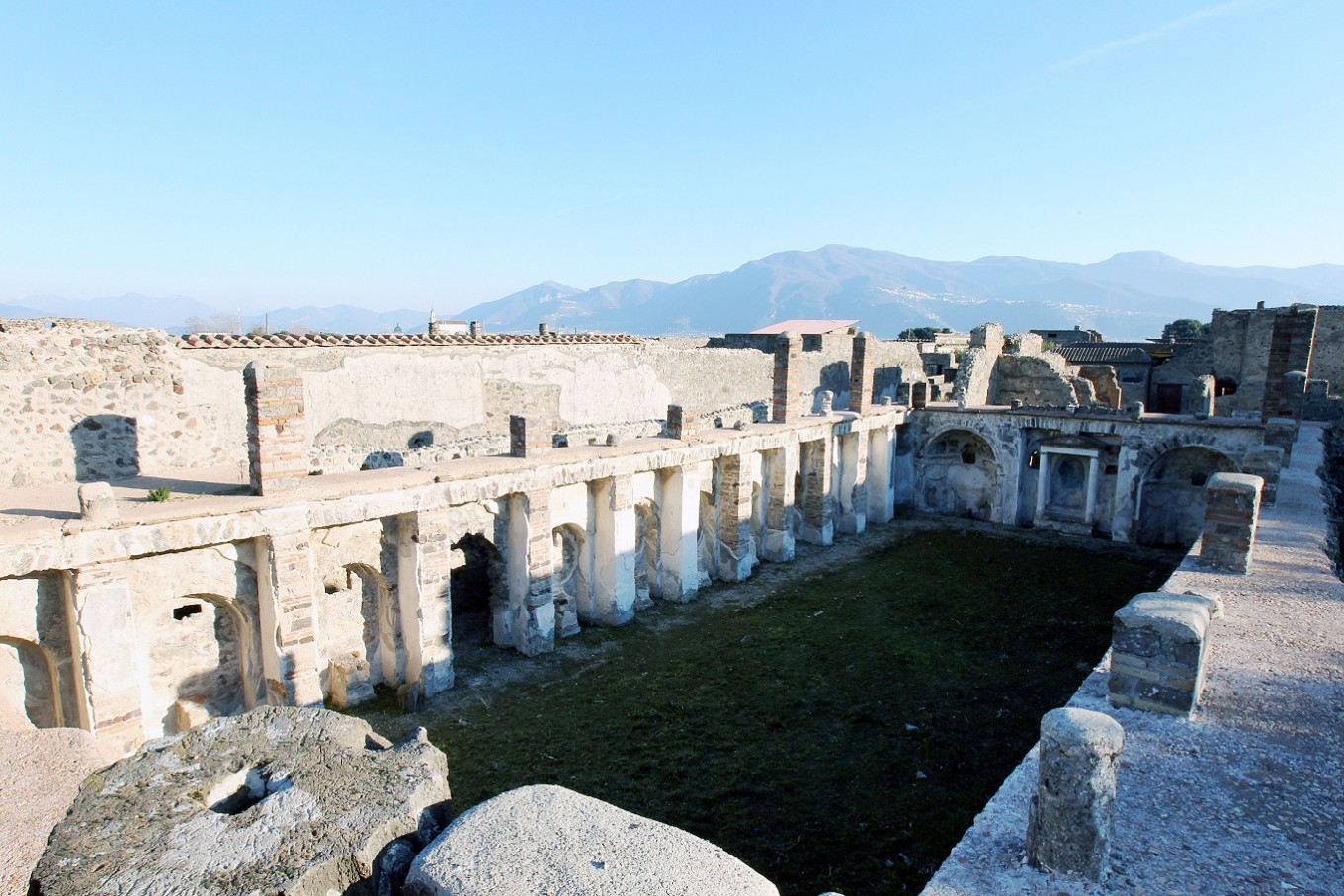Popular Reads
Top Results
Can't find what you're looking for?
View all search resultsPopular Reads
Top Results
Can't find what you're looking for?
View all search resultsLearning from Pompeii to deal with disasters
Different scientists hold different views on when the city was invented and when it was destroyed, but they commonly agree that the city was built in the 6th century BC and destroyed by an eruption in 79 AD
Change text size
Gift Premium Articles
to Anyone
It is fair to say that a volcanic eruption is one of nature’s most terrifying disasters.
Many active and dormant volcanoes nestle in different parts of the globe, with the Ring of Fire representing the most well-known volcanic area. The track is so-called because it is a major area in the basin of the Pacific Ocean where a large number of volcanic eruptions and earthquakes occur. Spanning a 40,000-kilometer distance in a horseshoe shape, the trajectory has 452 volcanoes, more than 75 percent of the world’s active and dormant volcanoes.
Eruptions are the risks faced by people living in this territory, including Indonesians. That is why experts will look into the past to formulate modern-day disaster risk management. Studies on the impact of the eruption of Mount Vesuvius, which destroyed the city of Pompeii in ancient Italy in 79 AD, provide some evacuation strategies that could save more lives should similar tragedies ever happen again.
The insights were presented during a seminar called “Pompeii: Life, death and rebirth, the story of a city and of a population through the archaeological and anthropological data” organized recently by the Embassy of Italy and the Italian Cultural Institute in Jakarta in the Istituto Italiano di Cultura (IIC), Jakarta.
Speakers featured during the seminar were Udayana University of Bali archaeology guest lecturer Michele Raddi, University of Naples Federico II forensic anthropologist Pier Paolo Petrone and the mayor of the city of Volturno in Italy, Emilio Incollingo. Petrone and Incollingo joined the seminar from Italy via Skype.
 Learning from the past: A restorer cleans and analyses a petrified victim of the eruption of Vesuvius volcano in the laboratory of the Pompeii Archaeological Site, on May 20, 2015 in Pompeii.(AFP/Mario Laporta)
Learning from the past: A restorer cleans and analyses a petrified victim of the eruption of Vesuvius volcano in the laboratory of the Pompeii Archaeological Site, on May 20, 2015 in Pompeii.(AFP/Mario Laporta)
Raddi said Pompeii serves as an ideal archaeological research site because of the wonderful conservation and preservation of its ancient ruins by the volcanic ash, which has left the remnants of the prosperous commercial hub of the Roman Empire intact.
Read also: Journey to the mountain that shook the world
Different scientists hold different views on when the city was invented and when it was destroyed, but they commonly agree that the city was built in the 6th century BC and destroyed by an eruption in 79 AD.
The thousands of tons of ash that covered the city after the eruption formed a solid cast over the ruins, preserving their original forms and thereby helping archaeologists to reconstruct the ancient city’s life before it vanished. It gives us clues to the modern facilities that the city had: thermopolia (cafés), public toilets, residential areas, bakeries and cloth mills.
Furthermore, Petrone said the ash casts that formed over the skeletons of the eruption’s human victims also preserved samples of human tissue and bone that has been used for bio-archaeological research in the last 20 years.
“We want to investigate the effect of a pyroclastic flow of cloud on the victims. The main question is: Why did these people die despite being sheltered from that vast, turbulent cloud?” Petrone explained, adding that this knowledge could help us to devise a safe and effective volcanic eruption mitigation scheme.
According to Petrone, one of the findings of the research was that the human victims did not die from the mechanical impact of the eruption, but because of the sudden temperature change that occurred with it.
Read also: World's primates facing extinction crisis, new report says
“Based on our microscopic analysis of histological [related to human tissue] features of the victims, they were exposed to heat amounting to around 300 to 600 degrees Fahrenheit [160 to 360 degrees Celsius],” he said, adding that the heat exposure was beyond the ability of humans to survive.
The complete preservation of anatomic joints and original postures of the mummies also indicated that they died instantly from the extreme temperature change, Petrone said. He showed a number of photos of the mummies’ facial expressions.
“Their facial expressions indicated they were completely unaware of what was happening during the explosion.”
After learning that sheltering human beings from the mechanical impact of an explosion alone is not enough, Petrone said the scientists could offer some modern implications on how modern-day disaster mitigation efforts could protect human beings from sudden exposure to extreme heat, which is proven to be deadly.
Petrone did provide some suggestions on the ideal distance between a shelter and a volcanic explosion site to avoid the deadly temperature change.
Based on his research, areas located within 10 kilometers of a volcano are likely to suffer from total devastation and mortality, while areas located within 10 to 15 km of the site would suffer from minor damage. The ideal distance is from 15 to 20 km, as the distance might help residents survive.
“This is a serious warning for all people living in volcanic areas around the world. You have to calculate a number of possible scenarios complete with detailed orientation and evacuation plans to protect locals from the heat exposure [based on the distance estimation],” Incollingo warned.











